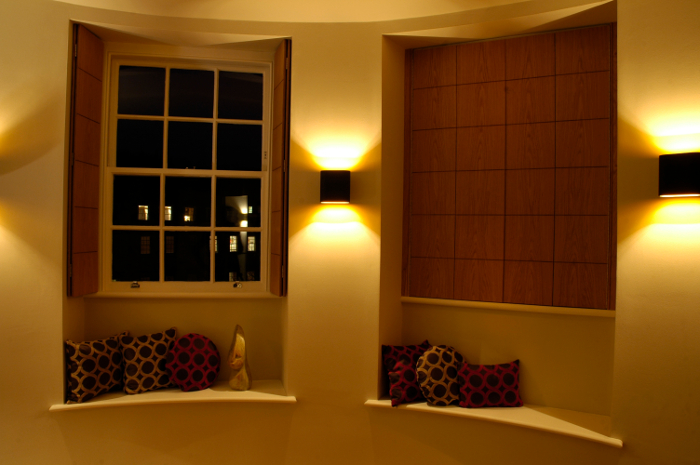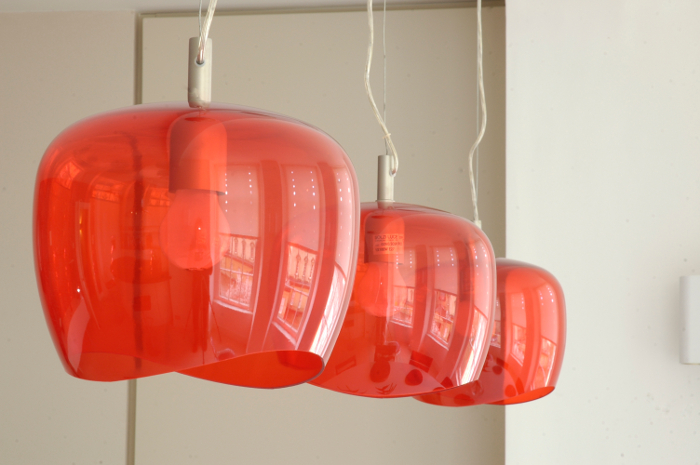
Cosy accent lighting in one of my own design projects.
Back in November I wrote about lighting trends – that post was all about the aesthetics but today I’d like to talk about more practical matters.
Where, how and why you use lighting is just as important to the final look of a room as the shape and style of a lampshade. You can choose a stunning industrial pendant for your dining room, but if the light itself isn’t quite right, it’s just another accessory cluttering the room. So today, I’m going to show you how to get lighting spot on.
Type
Before we go any further, let’s first take a quick look at the types of lighting:
Natural light: this comes from windows, glazed doors and skylights. Being natural, the quality of daylight changes day-to-day, season by season, and according to the aspect of the room.
Ambient lighting: also known as background or general lighting, it plays the part of daylight on days where natural light just isn’t enough. It’s also the main light used to illuminate a room after dark. Ambient lighting is often provided by a single overhead source. The type of ambient lighting will vary from room to room to reflect the room’s function – a bedroom, for instance, would generally have ambient lighting at a lower level than a kitchen.
Accent lighting: this adds texture and focus, depth and shade. It creates interest by casting shadows and highlighting certain areas.
Task lighting: casts light on your area of work. So whether you’re cooking, sewing, reading, working at a computer or building a model airplane, it should provide a source of focused but pleasant light.

Task lighting in the dining room. One of my own projects.
Variety
Every room should have a variety of light sources. A combination of ambient, task and accent lighting will create a wonderful atmosphere. The lights will complement and boost each other.
One lonely overhead light can feel very stark and cold – and that’s the problem with bad lighting; it can ruin all of your hard work decorating a space.
Planning and Design
I plan the lighting scheme early on in the design process. It should certainly be thought about before the room is decorated. Consider how the room will be used and by whom. Is it for studying, entertaining, lounging after a hard day at work? What furniture and accessories will be in the room? Where will they be positioned? These are important questions to ask.
Another important factor is the number of lighting circuits. Ideally lights with different functions would be operated by their own circuit and switches, so you have maximum flexibility for different lighting at different occasions. This might not always be possible, but if you are planning a room from scratch, make sure you think this through before plastering and decorating.
Different fittings require different types of bulbs – fluorescent, incandescent, Halogen, LED etc. This is a topic for another article, but something to bear in mind when planning your lighting scheme.
Positioning Lights
Now you know how the layout of your room, you can start to plan the position of lights. Use spotlights on your treasured possessions or to highlight a piece of furniture. Each seating area in the living room should have its own source of light – this is where table and floor lamps come in handy. The dining room should be given subtle, adjustable lighting; dimmable wall lights are the perfect solution here.
Lights can be positioned anywhere you want them; under the bath, at floor level on the stairs, in corners and so on. Experiment with a few ideas but always consider the practicalities.



